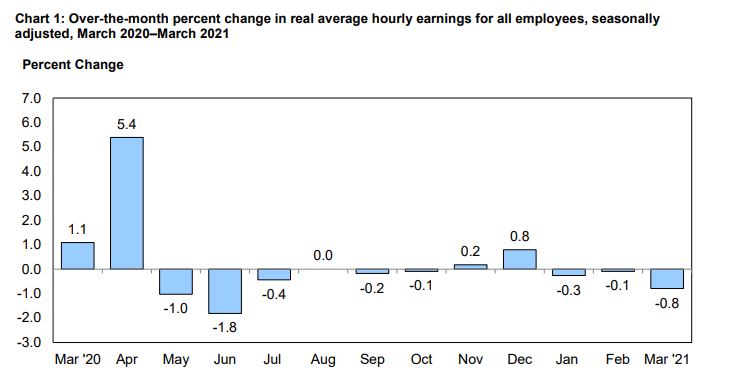Employment Blog April 2021
This employment blog is taken from the U S Labor Department Bureau of Labor Statistics. Nonfarm payroll employment rose by 916,000 in March, and the unemployment rate edged down to 6.0 percent. These improvements in the labor market reflect the continued resumption of economic activity that had been curtailed due to the coronavirus (COVID-19) pandemic. Job growth was widespread, led by gains in leisure and hospitality, public and private education, and construction. Substantial job losses related to the pandemic first occurred in March (-1.7 million) and April (-20.7 million) of 2020. As economic activity resumed, employment increased by 12.6 million from May through November but declined again in December (-306,000) following a surge in the number of coronavirus cases. Job growth restarted in January of this year, and nonfarm payroll employment has increased by 1.6 million over the past 3 months. However, payroll employment is down by 8.4 million, or 5.5 percent, from the pre-pandemic employment peak in February 2020.


Employment in leisure and hospitality rose by 280,000 in March and by 384,000 in the prior month, as pandemic-related restrictions continued to ease in many parts of the country. Within the industry, job growth in food services and drinking places (+176,000) accounted for almost two-thirds of the March increase. Employment also rose in arts, entertainment, and recreation (+64,000) and accommodation (+40,000). Employment in leisure and hospitality is down by 3.1 million, or 18.5 percent, since February 2020.
In March, employment increased in both public and private education, reflecting the continued resumption of in-person learning and other school-related activities in many parts of the country. Local government education added 76,000 jobs, state government education added 50,000 jobs, and private education added 64,000 jobs. Since February 2020, employment is down in local government education (-594,000), state government education (-270,000), and private education (-310,000).
Construction employment increased by 110,000 in March, following a loss in the previous month (-56,000) that was likely weather-related. In March, job gains occurred in specialty trade contractors (+65,000), heavy and civil engineering construction (+27,000), and construction of buildings (+18,000). Employment in construction is down by 182,000 since February 2020.
Professional and business services added 66,000 jobs in March. Employment in administrative and support services continued to trend up (+37,000), though employment in its temporary help services component, which had risen in recent months, was essentially unchanged in March. Over the month, employment also continued to trend up in management and technical consulting services (+8,000) and computer systems design and related services (+6,000). Since February 2020, employment in professional and business services is down by 685,000.
Employment in manufacturing rose by 53,000 over the month, with job gains in both the durable goods (+30,000) and nondurable goods (+23,000) components. Manufacturing employment is down by 515,000 since February 2020.
Transportation and warehousing added 48,000 jobs in March, with employment increases in couriers and messengers (+17,000), transit and ground passenger transportation (+13,000), support activities for transportation (+6,000), and air transportation (+6,000). Since February 2020, employment in couriers and messengers is up by 206,000, while employment is down by 112,000 in transit and ground passenger transportation and by 104,000 in air transportation. Overall, employment in transportation and warehousing is 66,000 lower than in February 2020.
Employment in the other services industry increased by 42,000 in March but is down by 396,000 since February 2020. Over the month, job gains occurred in personal and laundry services (+19,000) and in repair and maintenance (+18,000).
Social assistance added 25,000 jobs in March, with most of the gain in individual and family services (+20,000). Employment in social assistance is 306,000 lower than the peak in February 2020.
Employment in wholesale trade rose by 24,000 in March, with gains in both the durable and nondurable goods components (+14,000 and +10,000, respectively). Wholesale trade employment is 234,000 below the February 2020 level.
Retail trade employment increased by 23,000 in March. Job gains in clothing and accessories stores (+16,000), motor vehicle and parts dealers (+13,000), and furniture and home furnishings stores (+6,000) were partially offset by job losses in building material and garden supply stores (-9,000) and general merchandise stores (-7,000). Although retail employment has trended up since April, it is 381,000 lower than in February 2020.
In March, mining employment rose by 21,000, mostly in support activities for mining (+19,000). Mining employment is down by 130,000 since a peak in January 2019.
Financial activities added 16,000 jobs in March, with gains in insurance carriers and related activities (+11,000) and real estate (+10,000) more than offsetting a loss in credit intermediation (-7,000). Employment in financial activities is 87,000 below its level in February 2020.
Employment changed little in health care in March but is down by 557,000 since February 2020.
In March, employment was essentially unchanged in information. Employment in the industry is 241,000 lower than in February 2020.
Real average hourly earnings for all employees decreased 0.8 percent from February to March, seasonally adjusted, the U.S. Bureau of Labor Statistics reported today. This result stems from a decrease of 0.1 percent in average hourly earnings combined with an increase of 0.6 percent in the Consumer Price Index for All Urban Consumers (CPI-U). Real average weekly earnings increased 0.1 percent over the month due to the decrease in real average hourly earnings being more than offset by an increase of 0.9 percent in the average workweek.

